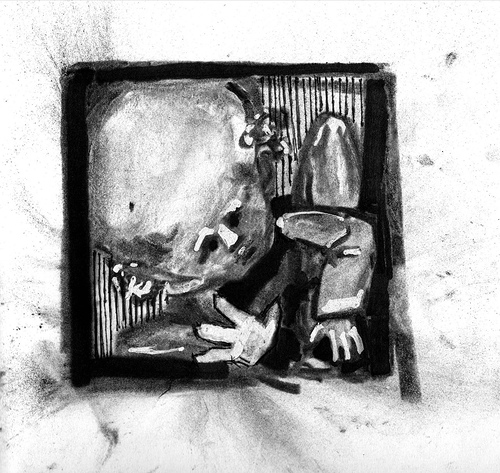December 6 Make.
What was the last thing you made? What materials did you use? Is there something you want to make, but you need to clear some time for it? (Prompt author: Gretchen Rubin)
My work involves making things every day. Email designs. Web banners. Marketing calendars. In my spare time, I try to keep a personal creative project in the works. My latest:
A pair of fingerless mitts with picot edging, knit from an organic cotton/wool blend yarn. Sadly, I’ve already misplaced them after only a couple of wears. I’m hoping they’ll turn up soon.
There are always projects I want to work on, things to make. I spent less time in 2010 on painting than I’d hoped. I started a series of bird paintings two years ago and planned to finally add a peacock, owl and penguin to the collection in 2010. Maybe in 2011?
Since then new ideas for projects have taken root in my mind, so I may never paint another bird. What’s more important to me is to always have a creative endeavor in process, whether it’s writing, music-related or making art.
Balancing projects like knitting, where I create by following a pattern, with projects entirely of my own design seem to flex different areas of the brain. I do firmly believe that these personal creative pursuits both keep me sharp and inspire my work in my day job.
What do you think? Do independent projects inspire you in your day job? Or do you get more benefit from considering them a separate creative outlet?
—-
This post is a part of #reverb10 by Gwen Bell. Gwen and her team enlisted a group of authors to write prompts for each day in December. Participants can blog, tweet or post photos in reaction to the prompts to reflect on the past year.

